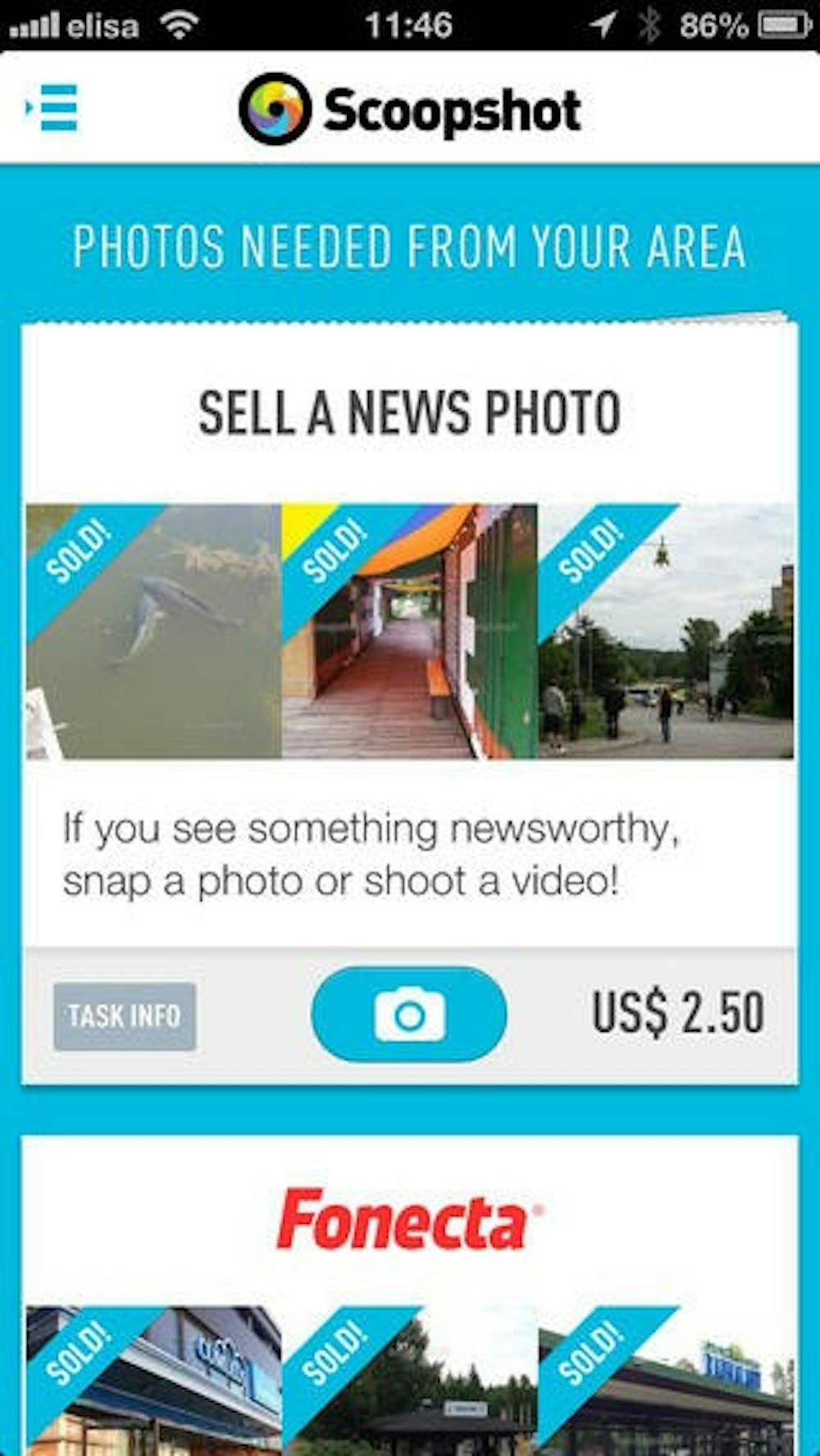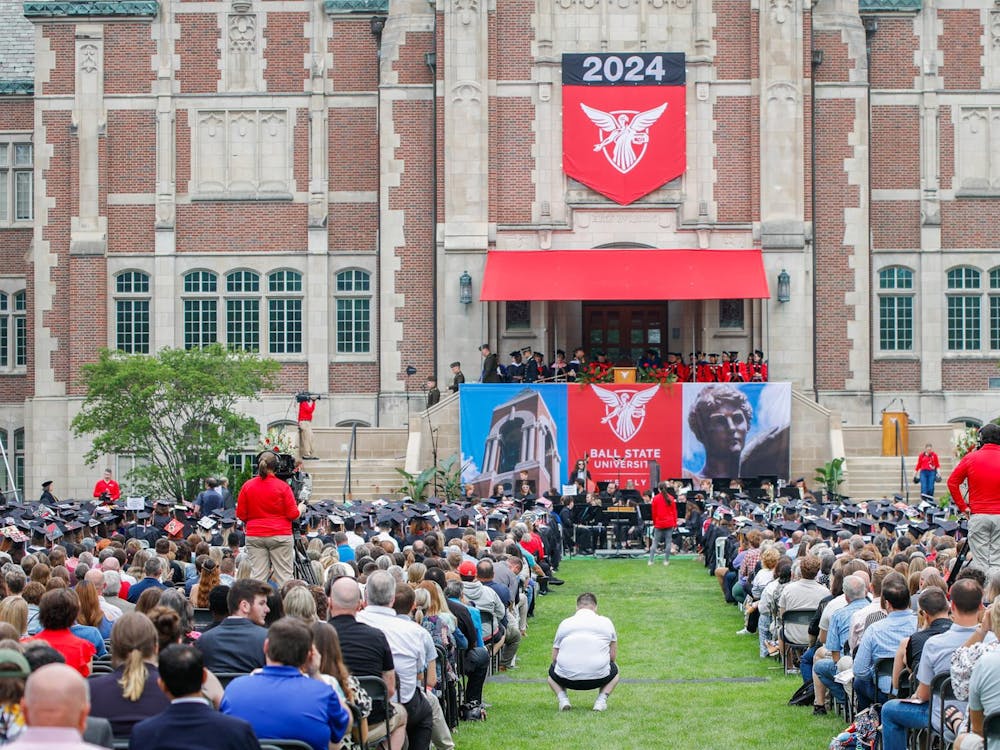Scoopshot
The app provides users a free opportunity to sell their photographs to the more than 70 clients.
The majority of their clients are media organizations, including USA Today, News Corp Australia and the London Evening Daily, giving users the chance to submit eyewitness images in the case of breaking news. Other clients, such as Finnair and Heineken, ask users for photographs of them enjoying their products.
Photographs are filtered through the program to insure authenticity, said Nancy Padberg, vice president for global marketing at Scoopshot.
A smartphone app is offering users a chance to sell their photographs, providing outsourced materials to the world of advertisement and media.
Scoopshot App is a crowdsourcing platform for photos and videos that enables smartphone users to earn income for their creative work. Using the app and creating an account is free.
After taking pictures with the app, users can upload them onto “tasks,” categories of photos based on certain criteria. Once the image is active, any of Scoopshot’s 70 clients can see the photos and purchase them from the photographer.
Nancy Padberg, vice president for global marketing at Scoopshot, said Scoopshot requires its clients to credit the photographer in all uses of the photo. The global firm, headquartered in Helsinki, Finland, recently expanded into the United States. Although it isn’t the first of its kind, the company does pride itself on its media niche.
The majority of their clients are media organizations, including USA Today, News Corp Australia and the London Evening Daily. Other clients, such as Finnair and Heineken, look for images of their products being used by the public.
Scoopshot offers a guarantee that the photos are first filtered by a quality assurance group to prevent any altered or inappropriate pictures from being sold, a feature attractive to media organizations, which rely on credibility.
“So instantly when you take a photo with our app, we can tell whether it was photoshopped, taken from a TV screen or a piece of art,” she said. “Our authentication is one of our biggest points of differentiation. The media would lose their credibility if there was a shark in the middle of a hurricane.”
The app allows media organizations to access a range of photos almost instantaneously, which could be an asset for newspapers that facing declining budgets. The Chicago Sun-Times laid off its entire photography staff in 2013 due to budget cuts and is attempting to replace them by hiring freelance photographers and training reporters to use iPhones.
Padberg said the app won’t threaten photojournalism or lead to the loss of any more positions.
“The costs have already been cut at these newspapers and in media, so we are fulfilling a need that is out there,” she said.
Ryan Sparrow, a Ball State professor of photojournalism and former news photographer, said the app isn’t necessarily bad for his industry.
“I think it probably says the same thing as the Associated Press using robots or software to write stories,” he said. “I think it is just a matter of anticipating some of the changes that are happening and not being reactionary to them and in some ways embracing them and finding ways of doing our jobs better or differently.”
Sparrow said it could actually help create jobs, such as more positions for photo editors.
“When we train photojournalists, we are not only training them how to shoot good photography, we are also training students how to use good photography,” he said. “It might change some of what we do, but if you are talking about an organization that is bringing in thousands, if not millions, of images, someone still needs to go through there and pick the best one.”
He said it would also be a good resource for media organizations in such situations as breaking news. Though, he fears that the app’s payments could lead to greed and a paparazzi mentality.
“I think it lowers the value of photojournalism and makes it more about money than getting the information out,” he said. “I don’t think that anyone should be doing their work for free, but I also think that when does it become more of paparazzi than photojournalism [instead of] this honorable tradition of journalism and telling stories and telling the truth?”
Padberg said the app did originate from the paparazzi with the idea that anyone equipped with a camera could earn money.
She said the photographers either upload generic images on a public task and set their own price or respond to a request from one of the company’s clients and earn the attached reward. The clients pay a subscription fee for the service, plus the cost of each selected picture and a 30 percent markup on its price tag.
“A typical [photo] can be anywhere from $4 to $50, depending on who is issuing the task and what they are looking for,” Padberg said. “It’s supplemental or spending change, if you will. It might buy you a cup of coffee or lunch.”
Since its founding the company three years ago, the Scoopshooters in 177 countries have earned more than $530,000 in total, she said.





